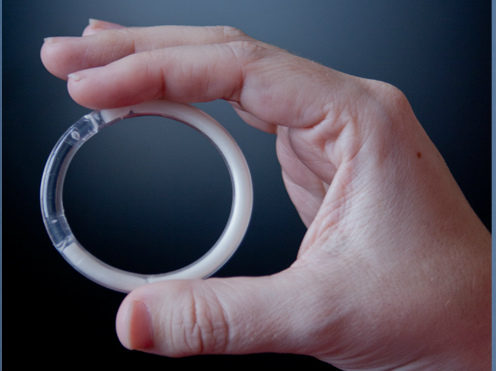For decades, the condom has been the only form of contraceptive widely used to prevent both unplanned pregnancies and the transmission of HIV.
Now, researchers at Northwestern University have come up with a new option: An intravaginal ring that helps prevent pregnancy while simultaneously releasing low doses of an antiretroviral drug that reduces a woman’s risk of contracting both HIV and genital herpes.
Patrick Kiser, an associate professor of biomedical engineering and obstetrics and gynecology at Northwestern, devised the ring with the hopes that it would offer women more control over both disease and pregnancy prevention.
“The field of HIV prevention is really moving towards these long-acting drug delivery systems that require less user intervention, which is great because sex is episodic and exposure to [HIV] is episodic,” Kiser told FoxNews.com. “And because you don’t know when you’re going to be exposed, or even necessarily when you’re going to have sex, it’s better to…have protective measures on board at all time.”
Kiser and his team at Northwestern spent five years developing the two-inch ring, which releases doses of the contraceptive levonorgestrel and the common antiretroviral HIV medication tenofovir after being inserted in the vagina. Similarly to the NuvaRing, women can insert the device on their own. Women can then leave the ring in for up to 90 days, removing it briefly for cleaning if necessary.
Creating a device capable of releasing the proper doses of both the contraceptive and antiretroviral drugs posed a unique obstacle to researchers.
“The dose of contraceptive is very low – 10 micrograms per day, whereas with the antiviral drug we’re delivering is about 10 milligrams a day,” Kiser said. “That’s a thousand times different in terms of the amount being delivered for each drug and that was a real engineering challenge to develop a device that could achieve those extreme ranges of drug delivery.”
Eventually, they created a ring composed of three types of plastic tubing capable of releasing the appropriate doses of each medication contained within the device.
The medications used in the device both have a proven history of being both safe and effective. Levonorgestrel, which thickens a woman’s cervical mucus to prevent sperm from reaching the uterus, is widely used in popular forms of birth control like Mirena.
Source; Fox news


